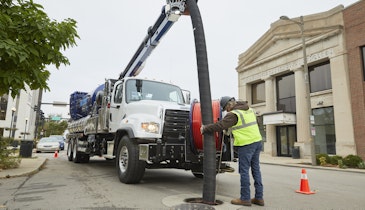Interested in Education/Training?
Get Education/Training articles, news and videos right in your inbox! Sign up now.
Education/Training + Get AlertsA pilot inexperienced with the plane, an airport’s glidescope out of service, problems with the automatic throttle, possible lack of proper supervision; take away any one of those suspected contributing factors and Asiana Flight 214 may not have crashed while landing at San Francisco International Airport in July. While still under investigation, the crash illustrates how accidents often have several causes, some possibly minor, that line up in just the right way to result in disaster.
The pilot in control of Flight 214 was a skilled veteran, but undergoing his “initial operating experience” training on the Boeing 777. It was the first time his instructor had filled the trainer role. The glidescope wasn’t necessary due to the perfect weather during the landing, but would have shown they were too low. It’s possible the pilots assumed the autothrottle was maintaining the proper speed, which it wasn’t. The plane crashed just short of the runway, which wouldn’t have happened if someone in the cockpit had recognized they were going too low and too slow.
Looking at the most frequently cited OSHA violations for fiscal 2012 (Oct. 1, 2011 to Sept. 30, 2012), one can see how a few things that happen together could lead to a serious safety event on the job site.
1. Fall protection, construction (29 CFR 1926.501)
2. Hazard communication standard, general industry (29 CFR 1910.1200)
3. Scaffolding, general requirements, construction (29 CFR 1926.451)
4. Respiratory protection, general industry (29 CFR 1910.134)
5. Control of hazardous energy (lockout/tagout), general industry (29 CFR 1910.147)
6. Powered industrial trucks, general industry (29 CFR 1910.178)
7. Electrical, wiring methods, components and equipment, general industry (29 CFR 1910.305)
8. Ladders, construction (29 CFR 1926.1053)
9. Machines, general requirements, general industry (29 CFR 1910.212)
10. Electrical systems design, general requirements, general industry (29 CFR 1910.303)
Without proper fall protection, a simple slip of the foot could result in death. OSHA reported 4,609 total worker deaths in 2011 – nearly 90 weekly – almost 13 every single day. It’s no coincidence that the most cited violation was also the most common cause of the 4,188 deaths in the construction business in calendar year 2011, accounting for 35 percent of deaths in that industry, or that the first seven deaths of 2013 were all related to falls – all within the first five days of the year, including four in one day:
- Jan. 2 – fall from a ladder.
- Jan. 3 – 10-foot fall through a floor of home under construction.
- Jan. 4 – 80-foot fall from a cellular tower.
- Jan. 4 – 20-foot fall down steps.
- Jan. 4 – 30-foot fall from equipment.
- Jan. 4 – 8-foot fall from a drilling machine when it hit rebar.
- Jan. 5 – 30-foot fall while doing maintenance work on a crane.
The rest of what OSHA calls the Fatal Four for construction workers were:
- Electrocutions – 69 (9 percent)
- Struck by object – 73 (10 percent)
- Caught in/between – 18 (2 percent)
Eliminating those four, OSHA says, would save 419 lives a year – more than one life every day.
Have you looked at your most common safety violations? Do you regularly inspect the job site or monitor worker performance? Do you investigate close calls that could have resulted in injury or death?
Eventually, such “near misses” will result in a recordable injury. According to OSHA, for every 600 recordable injuries, there will be about 30 “life-changing” injuries. And for every 30 life-changing injuries, there will be one fatality. So the more minor incidents you can prevent, the less likely one of your co-workers, or you, will lose their life on the job.





